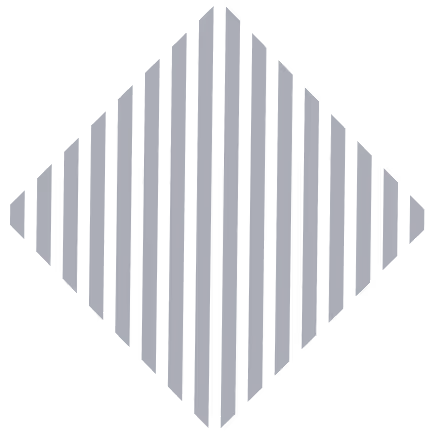How to Automate Hiring Process for Faster, Smarter Recruitment

Tired of losing hours to back-and-forth emails, spreadsheet chaos, and no-shows?
Automating your hiring process can change that. When you let AI handle time-consuming tasks like screening, scoring, and scheduling, you free up space to focus on people, not paperwork.
The result?
Faster decisions, better hires, and a smoother process from start to finish.
With platforms like HRMLESS, you can run interviews 24/7 and engage candidates automatically, without adding stress to your day. From reducing ghosting to minimizing bias, automation helps make your hiring more consistent, fair, and scalable.
And the best part?
You don’t have to be a tech expert to get started. The right platform adapts to your volume and helps you identify top talent—faster and smarter.
In this blog, we will cover:
- Key benefits of automating your hiring process
- Essential steps and tools to get started
- Best practices to keep hiring human while going AI-first
Here is a full breakdown!
Benefits of Automating the Hiring Process
Automating hiring saves time, reduces errors, and helps you connect better with candidates. It makes your process faster, more fair, and easier to manage when you have many job openings.
Improving Efficiency
Automation cuts down hours spent on manual tasks like screening resumes and scheduling interviews. With AI, you can quickly score candidates and focus on the most qualified ones. This can reduce the time it takes to fill roles by up to 60%.
Automated tools handle common delays, such as back-and-forth emails or missed interview bookings. You can send reminders via SMS or email to keep candidates engaged and reduce no-shows.
AI tools allow you to schedule interviews 24/7 without extra effort. This lets you hire faster and focus on strategic tasks instead of busywork.
Reducing Bias
Automation helps remove unconscious bias from your hiring process.
AI evaluates candidates using consistent criteria, so every applicant gets a fair chance. This creates a more diverse and inclusive pool of candidates.
Using pre-set questions and objective scoring, AI solely bases its decisions on skills and experience. This reduces the risk of favoritism or guesswork.
The system tracks how candidates are scored, making it easier to spot irregularities and improve fairness. People from different backgrounds receive equal treatment.
Enhancing Candidate Experience
Candidates value fast responses and clear communication.
Automated hiring tools keep applicants informed at every step. You can send instant invites and reminders without waiting for a person to reply.
24/7 AI interviews let candidates complete assessments on their own time. This flexibility suits people with busy schedules or in different time zones. It also lowers the chances of candidates ghosting your process.
Engagement tools like SMS nudges help maintain momentum and reduce dropouts. Candidates feel valued and respected, which reflects well on your company's reputation.
Automation keeps the process smooth and professional for everyone.
Key Steps to Automate Hiring
Start automating your hiring by identifying which parts of the process waste your time. Then, pick tools that fit your needs and connect them with your current HR software. This makes hiring faster and keeps everything running smoothly.
Identifying Repetitive Tasks
Review your hiring steps and find tasks you repeat often, such as screening resumes, scheduling interviews, and sending follow-up messages. These tasks take up time but don't need much judgment.
Write down these tasks so you can focus on automating them. For example, manual screening can take hours every day. Automating this saves time and ensures every applicant gets the same chance.
By automating interview scheduling and candidate ranking, you reduce errors and delays. You also reduce no-shows because only engaged candidates are invited to book. This helps you move faster in your hiring.
Choosing the Right Automation Tools
Pick tools that handle the repetitive tasks you identified.
- Choose software that can screen candidates automatically, send notifications, and schedule interviews without back-and-forth.
- Look for features like AI pre-screening interviews that let candidates respond anytime. Tools that score and rank applicants help you quickly see who fits best.
- Ensure the tool keeps candidates engaged with messages that nudge them forward. Engagement helps reduce ghosting, so you get more reliable responses.
Good AI hiring software keeps the process moving without extra work.
Integrating Current HR Systems
Your automation tools should work with your existing HR systems, like your Applicant Tracking System (ATS) or Human Resources Information System (HRIS). This keeps data in one place and avoids duplicate work.
Integration lets your automated platform update candidate status and sync interview schedules automatically. You won't need to switch between tools or enter data twice.
For example, HRMLESS connects with your current software, so scoring, scheduling, and candidate communication happen smoothly. It ensures fast, organized hiring without disrupting your workflow.
Manual vs Automated Hiring: What’s the Real Difference?
Still relying on spreadsheets, email threads, and last-minute interviews?
You’re not alone, but there’s a better way. Manual hiring often leads to delays, inconsistent evaluations, and burnout. Automated hiring tools, like HRMLESS, replace guesswork with data and streamline every stage, from screening to scheduling.
Here’s a side-by-side comparison to help you see the difference:
Process Step
Manual Hiring
Automated Hiring
Resume Screening
Done manually, prone to bias and oversight
AI-based filtering by job match and skills
Interview Scheduling
Back-and-forth emails and time zone conflicts
Self-booking and calendar sync in seconds
Candidate Communication
Delayed follow-ups and scattered updates
Automated SMS/email reminders to keep momentum
Scoring & Evaluation
Varies by interviewer, inconsistent
Standardized scoring across all candidates
No-Show Rate
Higher due to miscommunication
Reduced by 50% with engagement nudges
Time to Hire
Often 2–4 weeks or longer
Reduced by 60% or more
Bias Control
Subjective decisions, minimal oversight
AI-enforced fairness and audit trails
Scalability
Hiring slows with increased volume
Scales easily across roles and regions
Team Collaboration
Feedback via long email chains
Centralized notes, access control, and workflows
Automation doesn’t just make things faster, it makes them smarter, more accurate, and more candidate-friendly.
Popular Tools and Technologies
You can speed up hiring using tools that automatically manage resumes, interviews, and schedules. These tools help you focus on the best candidates without wasting time on manual tasks.
Applicant Tracking Systems
An Applicant Tracking System (ATS) stores and organizes resumes for easy review. It helps you track where each candidate is in the hiring process.
With an ATS, you can filter resumes based on skills, experience, and keywords. This means you spend less time sorting through unfit applicants. You also get better insights into candidate progress and can collaborate with your team inside the system.
Many ATS options integrate with your current HR software. This avoids double work and keeps your hiring workflow smooth.
AI-Based Resume Screening
AI resume screening uses smart software to read and score resumes fast.
It highlights candidates who fit your job requirements best. This technology reduces bias by focusing only on relevant skills and experience. It also saves you hours every day by automating the first round of candidate review.
For example, many AI tools use AI to pre-screen candidates, so only the top matches move forward. You don't waste time on those who don’t meet your criteria.
Automated Interview Scheduling
Scheduling interviews can be hard, with back-and-forth emails causing delays.
Automated scheduling tools sync with your calendar and let candidates pick a time that works for both of you. These tools send reminders to reduce no-shows. They also allow candidates to reschedule if needed, keeping the process flexible. You save time and keep hiring, moving faster.
Combining this with AI interviews means candidates can be assessed anytime, even outside your office hours. This keeps your pipeline full without extra effort.
Best Practices for Implementation
When automating your hiring process, protect candidate information, prepare your team to use the tools, and regularly check how well the system performs. These steps help you get the most from automation while keeping things smooth and fair.
Ensuring Data Privacy
Protect candidate data by using secure systems that comply with laws like GDPR or CCPA.
Collect only information needed to make hiring decisions. Use automation platforms that encrypt data during transfer and storage. Limit access to authorized team members.
Be clear with candidates about how you use their data. Include privacy notices in your application process. Regularly review your data protection practices to avoid breaches and build trust.
Training Your Hiring Team
Your team needs to understand how to use automated recruiting tools.
Offer hands-on training sessions focusing on platform features like AI screening, scheduling, and candidate messaging. Explain how automation supports their work without replacing human judgment. Train them to interpret AI-generated scores and handle exceptions.
Encourage questions and share best practices. Continue training as you update your system. This helps your team work confidently and productively.
Monitoring Performance and Results
Check automated hiring systems regularly.
Track key metrics such as hiring time, candidate engagement, and drop-off rates.
Use real-time dashboards to spot bottlenecks early. If candidates stop responding after AI interviews, adjust your messaging or scheduling.
Compare automated results with previous manual processes. Look for improvements in speed and quality and adjust settings based on data.
Challenges and Solutions
Automating your hiring process brings benefits but also some hurdles. Address concerns about new technology and find the right balance between automation and personal interaction to keep your hiring smooth and effective.
Overcoming Resistance to Change
People often worry that automation will replace jobs or reduce the personal touch.
To ease this, explain that AI tools handle repetitive tasks like pre-screening and scheduling. This frees your team to focus on high-impact work like interviews and building relationships.
Train your staff to use AI tools confidently. Show them how platforms like HRMLESS reduce bias and save time. Share data on faster hires and better candidate matches to build trust in the system.
Use pilot programs to introduce automation step-by-step. Collect feedback and adjust processes as needed. When your team sees real improvements, they are more likely to embrace change.
Balancing Automation and Human Touch
Automation speeds up hiring but can feel impersonal if overdone.
Use AI to handle initial steps such as scoring resumes and conducting 24/7 AI interviews. This keeps the process moving without delays.
Reserve live conversations for later stages. Human recruiters should still handle interviews and final decisions to evaluate fit and culture.
Combine AI with SMS and email nudges to keep candidates engaged while maintaining a personal connection. HRMLESS offers features that send timely reminders, reducing no-shows by 50%.
Use real-time analytics to spot issues early. If candidates drop out, adjust communications or add more human contact where needed.
Automation Uses
Human Interaction Needed
Resume screening
Behavioral and culture fit interviews
Scheduling interviews
Final decision making
Candidate engagement
Personalized follow-up messages
The Final Thoughts
Manual hiring slows you down.
Automation gives you the speed, structure, and consistency to move top talent forward, without sacrificing quality or control. From screening to scheduling, AI handles the repetitive work so your team can focus on what really matters: people.
Whether you're scaling fast or just want to simplify your current workflow, platforms like HRMLESS make it easy to automate without the learning curve. You get better hires, fewer no-shows, and a more professional candidate experience—day or night.
Want to make hiring faster, smarter, and bias-free?
Start your free trial with HRMLESS today, because great hiring shouldn't be a bottleneck.
Frequently Asked Questions
Still wondering how automation fits into your hiring process? Here are some real-world questions teams often ask, along with practical answers to help you take the next step confidently.
What are the best tools for automating the recruitment process?
Look for tools with AI-powered screening, automatic scheduling, and candidate scoring. Platforms like HRMLESS use AI to handle these efficiently. Choose solutions that integrate with your existing applicant tracking system (ATS).
Which free software can small businesses use to streamline hiring?
Free tools often offer basic features like posting job ads and tracking applicants. These are good for small teams but may lack advanced automation. Start with these and upgrade as your hiring needs grow.
How can AI enhance the recruitment efforts of a company?
AI speeds up screening by evaluating resumes and interviews 24/7. It helps reduce bias by treating all candidates equally. AI tools can also automatically score applicants, schedule interviews, and send reminders to keep candidates engaged.
Can you list examples of effective recruitment tools currently in use?
Some tools automate interview scheduling and candidate engagement via email or SMS. Others use AI to score applicants and filter resumes. HRMLESS, for instance, combines these features powered by Nerva AI to ensure seamless hiring.
What should HR look for when choosing software for hiring?
Choose software that saves time by automating repetitive tasks like scheduling and scoring. Look for easy integration with your current HR systems. It should also help reduce no-shows and improve candidate experience.
What are the top features to look for in recruitment automation software?
Look for AI pre-screening interviews, automatic scoring and filtering, and multi-channel candidate engagement (such as SMS and email). Real-time analytics and ATS integration help you track your hiring process effectively.
Featured
Subscribe to ournewsletter
Related posts
Explore the world of photography with our curated selection of
portfolio websites that showcase creativity and innovation.





